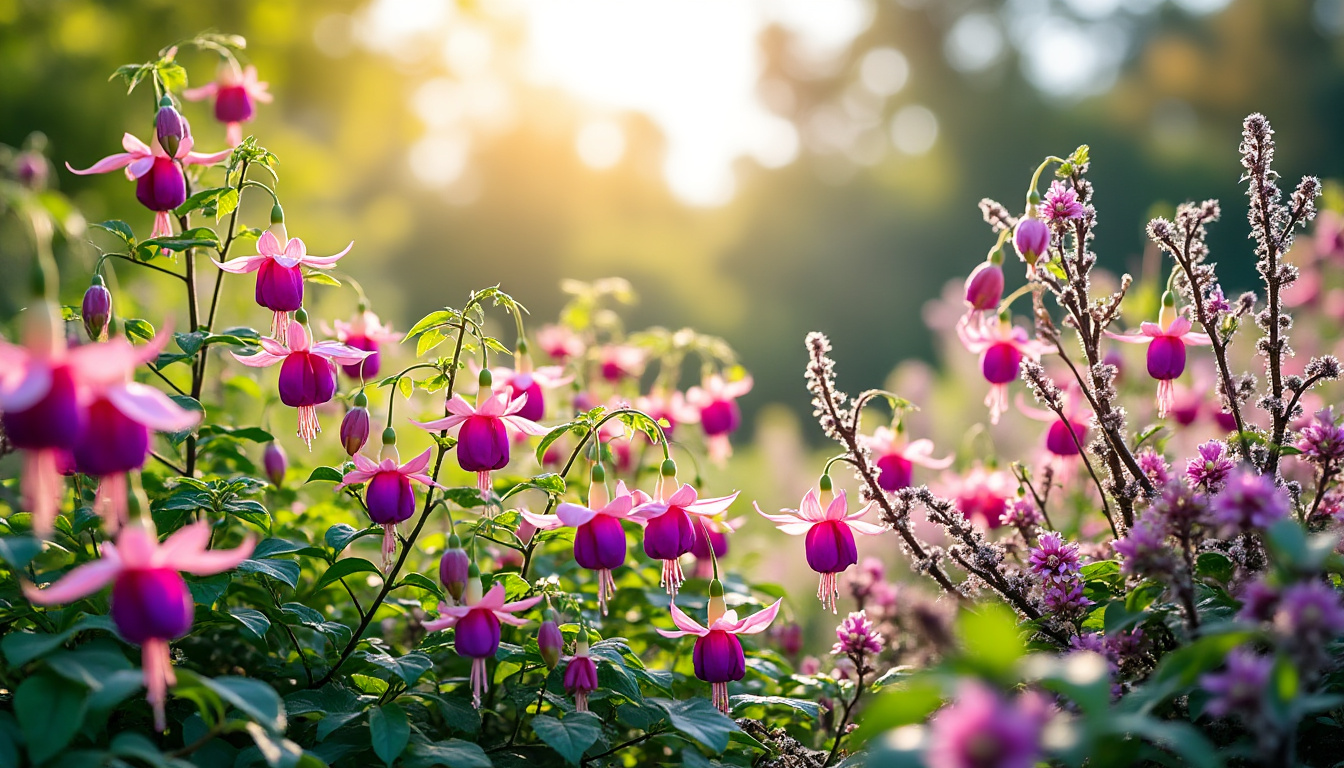Understanding the timing and techniques for pruning fuchsia plants is essential for gardeners aiming to maintain their vibrancy and health. Seasonal variations inherently influence growth patterns, making it important to adapt pruning practices accordingly. This guide will delve into the optimal times, methods, and tools required for efficient fuchsia pruning. Each section will expand on critical aspects to ensure thriving fuchsia plants.
Optimal Times for Pruning Fuchsia 🌱
The best time to prune fuchsia plants primarily falls between late winter and early spring. During this period, the plant is usually in its dormant stage, having shed its leaves in preparation for the upcoming growth cycle.
Pruning during the dormancy stage can promote robust new growth and flowering in the subsequent growing season.
Here’s how to approach timing for pruning:
- Late Winter: This is typically when plants are still dormant. Pruning now can help improve air circulation and sunlight penetration.
- Early Spring: As buds begin to swell, the timing for pruning can initiate fresh and vigorous growth.
- Summer: Light maintenance pruning is acceptable to control size and remove spent blooms.
- Fall: Pruning should be minimal as plants prepare for rest; avoid significant cuts during this time to prevent stress.
Through observing conditions specific to your region, gardeners can better judge the optimal time to prune their fuchsia plants. Weather patterns, local temperatures, and plant health are all factors worth considering before making any cuts.
Benefits of Pruning at the Right Time
Pruning at the right times has several benefits:
- Encourages vibrant blooms and healthy foliage.
- Prevents overcrowded growth, leading to better air circulation.
- Stimulates new shoots that are essential for a full-bodied plant.
- Maintains desired shape and size, avoiding leggy growth.
Each timing decision should reflect the specific cultivar of fuchsia being cultivated, as some varieties might require slightly different approaches based on their growth habits.
| Season | Recommended Actions |
|---|---|
| Late Winter | Heavy pruning; remove any dead, damaged, or diseased stems. |
| Early Spring | Light pruning to shape the plant before growth season. |
| Summer | Deadhead spent blooms and light trimming for upkeep. |
| Fall | Avoid significant pruning; focus on maintenance. |
Essential Tools for Pruning Fuchsia ✂️
Equipping oneself with the right tools before embarking on pruning is paramount for the success of any gardening task. Proper tools not only help achieve clean cuts but also boost the overall health of the fuchsia plant.
To effectively prune fuchsia plants, consider gathering the following tools:
- Pruning Shears: Ideal for precise cuts on small branches. Ensure they are sharp and sanitized between uses to prevent disease spread.
- Loppers: These are useful for cutting thicker, harder wood that requires more leverage.
- Hand Saw: A vital tool for larger branches that pruning shears or loppers cannot tackle efficiently.
- Gloves: Protect hands from thorns, sap, and any potential allergens.
- Disinfectant: Clean your tools before and after each use to ensure the prevention of disease transmission among plants.
Using the right tools goes hand-in-hand with achieving the best results for fuchsia pruning.
Step-by-Step Pruning Process
Understanding the step-by-step process can help cultivate optimal growth:
- Assess Plant Health: Examine the fuchsia for any dead, damaged, or diseased parts.
- Initial Cuts: Focus on the removal of any problematic stems first.
- Budding Shoots: Once the initial cuts are made, focus on shortening budding shoots for even growth.
- Shaping: Trim back branches to maintain a rounded and full appearance. Maintaining an outward-growing shape promotes better sunlight exposure.
Seasonal Considerations for Pruning 🌼
Pruning strategies should evolve as seasons change. Variations in growth patterns and environmental conditions must be taken into account to ensure fuchsias flourish throughout the year.
Spring Pruning Techniques
Spring marks the beginning of the growing season, making it an ideal time to adopt more aggressive pruning practices. During this period, fuchsias can benefit from:
- Selective Trimming: Focus on maintaining desirable shape while promoting new growth.
- Removing Older Wood: Older stems should be cut back to encourage fresh growth.
- Deadheading: Constantly remove spent flowers to divert energy toward new blooms instead of seed formation.
These actions ensure increased vigor in the growing season, allowing fuchsias to perform at their best.
| Pruning Period | Specific Techniques |
|---|---|
| Spring | Selective trimming; remove old wood; deadhead. |
| Summer | Conduct light maintenance; continue deadheading. |
| Fall | Avoid heavy cuts; only prune as necessary for health. |
Summer Maintenance
As the temperatures rise, plants become more active. Routine maintenance can significantly benefit fuchsia health:
- Light Trimming: Remove leggy or weak stems.
- Watering and Feeding: Provide consistent hydration and supplemented nutrients like Miracle-Gro for optimal growth.
- Insect Control: Monitor for pests to prevent further damage during the active growing season.
These summer adjustments allow for improvement in both structure and health, contributing positively to overall plant vitality.
Avoiding Common Pruning Mistakes ❌
Even seasoned gardeners can fall into traps when it comes to pruning practices. Being aware of common mistakes makes it easier to circumvent potential issues.
- Over-Pruning: This can induce shock, leading to stress for the plant.
- Wrong Timing: Pruning in the flowering season may hamper blooming.
- Ignoring Tool Hygiene: Not properly cleaning tools can contribute to diseases spreading.
It’s vital to recognize these pitfalls and remain vigilant throughout the pruning process, ensuring plants emerge healthier and more productive.
Recognizing Signs of Over-Pruning
Being attentive to your plants can prevent further damage:
- Leaf Drop: A sudden loss of leaves indicates distress.
- Stunted Growth: A lack of new shoots warrants an assessment of pruning practices.
- Browning Tips: This often signifies stress as a result of excessive cutting.
| Common Mistake | Indicators |
|---|---|
| Over-Pruning | Excessive leaf drop; stunted growth. |
| Wrong Timing | Reduced flowering; prolonged dormancy. |
| Neglecting Hygiene | Increased disease occurrence; wilting leaves. |
The best time to trim climbing roses for peak growth
Helpful Tips for Successful Fuchsia Pruning 🌳
Each gardening season brings its own unique challenges. Following specific tips can help facilitate a successful pruning experience:
- Plan Ahead: Outline your pruning schedule based on seasonal observations and local climate.
- Stay Educated: Utilize resources like Bonnie Plants for guidance on plant care.
- Join Gardening Communities: Engage with groups or online forums to share experiences and gain insights from others.
Incorporating these tips into monitoring fuchsia plants will enhance the gardening experience and lead to healthier blooms.
FAQ
- How often should I prune my fuchsia plant?
It is recommended to prune once a year in late winter or early spring. - Can I prune my fuchsia during the growing season?
Yes, light pruning can be done during the growing season, but avoid aggressive cuts that may shock the plant. - What tools are essential for pruning fuchsia plants?
Sharp pruning shears, loppers, gloves, and disinfectant are vital for effective pruning. - Will pruning harm my fuchsia plant?
No, proper pruning promotes healthy growth and maintains the plant’s appearance. - How do I recognize if I have over-pruned?
Signs include excessive leaf drop, stunted growth, or browning leaf tips.
Understanding the nuances of seasonal changes ensures fuchsia plants not only survive but thrive. Armed with proper knowledge and tools, gardeners can foster an environment ripe for vibrant blooms.












